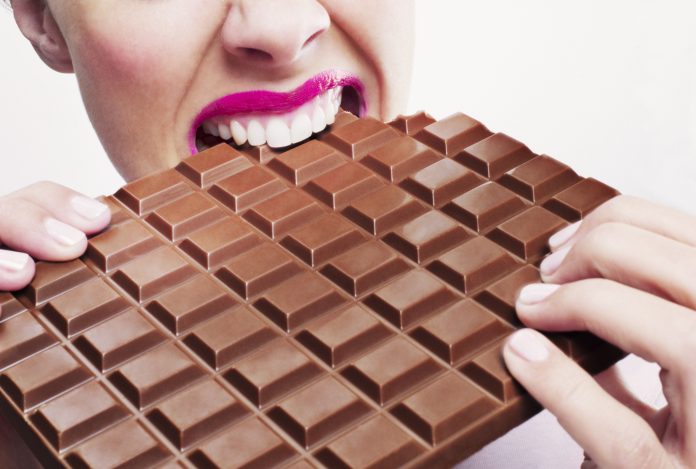The flavor compounds found in chocolate are complex, varied, and tasty! Dark chocolate in particular has a wide range of flavors, aromas, and textures. Unlike milk chocolate, dark chocolate does not contain milk solids and it has a higher percentage of cocoa. These factors can create a deep, rich, and bitter flavor that varies greatly from chocolate bar to chocolate bar. Learning how to taste dark chocolate and how to find quality dark chocolate will help enhance your tasting experience.
Using All of Your Senses
Cleanse your palate. Be sure that your mouth is free from residual flavors from a previous meal. This will help you taste the all of the dark chocolate’s complex flavors.
Drink some water, eat an apple or some bread, or chew on a piece of ginger to help cleanse your palate.
Examine the dark chocolate’s surface and color. Quality chocolate should have a smooth, blemish-free, shiny, and even surface. Old chocolate will appear to have a hazy surface, which is referred to as blooming. Observe the color of the chocolate, and make sure the color is even throughout.
The color of the chocolate is determined by the roasting process of the cacao beans and where the beans originated. Chocolate can have a tint of pink, purple, red, or orange.
Break the chocolate in half. Break the chocolate in two and listen for a loud snap. High-quality dark chocolate with higher levels of cocoa will break with smooth edges and create a loud snap. Look for smooth, fine gradients along the broken edges.
Smell the chocolate. Hold the chocolate up to your nose and inhale deeply through your nose. Aroma is an important component of flavor. It helps prep your other senses and enhances the various flavors.
Rub the chocolate. Use one finger to lightly touch the surface of the chocolate. Quality chocolate will have a smooth, even surface that is free from dimples, dents, and other imperfections. The chocolate may melt a bit from your body heat. This will help release some of the aromas and enhance its taste.
Don’t chew the chocolate. Place a sizable piece of chocolate in your mouth, but don’t chew it immediately. Chewing may release some of the bitter flavors that are more common in dark chocolate. Chew it only to break it into small enough pieces that it begins to melt on its own. The cocoa butter in the dark chocolate will melt and will mask any bitter notes.
Pay attention to the chocolate’s texture. As the chocolate melts in your mouth, think about its consistency and how it feels on your tongue. High-quality chocolate will have a velvety texture, while poorer quality chocolate may feel oily, waxy, or grainy.
Concentrate on the chocolate’s flavors. Focus on the flavors of the melting chocolate. Does the chocolate taste similar to the way it smells? Does the taste change over time as it melts and continues to coat your mouth? Notice what flavors are the strongest and what flavors linger the longest.
Write down your thoughts. As you continue to taste more and more dark chocolate, consider writing down your thoughts and observations in a notebook. Be sure to jot down your reflections soon after tasting the chocolate. Keeping a handy record of your tastings will make it easier to reflect on the tastes, textures, and types of dark chocolate you like best!


























